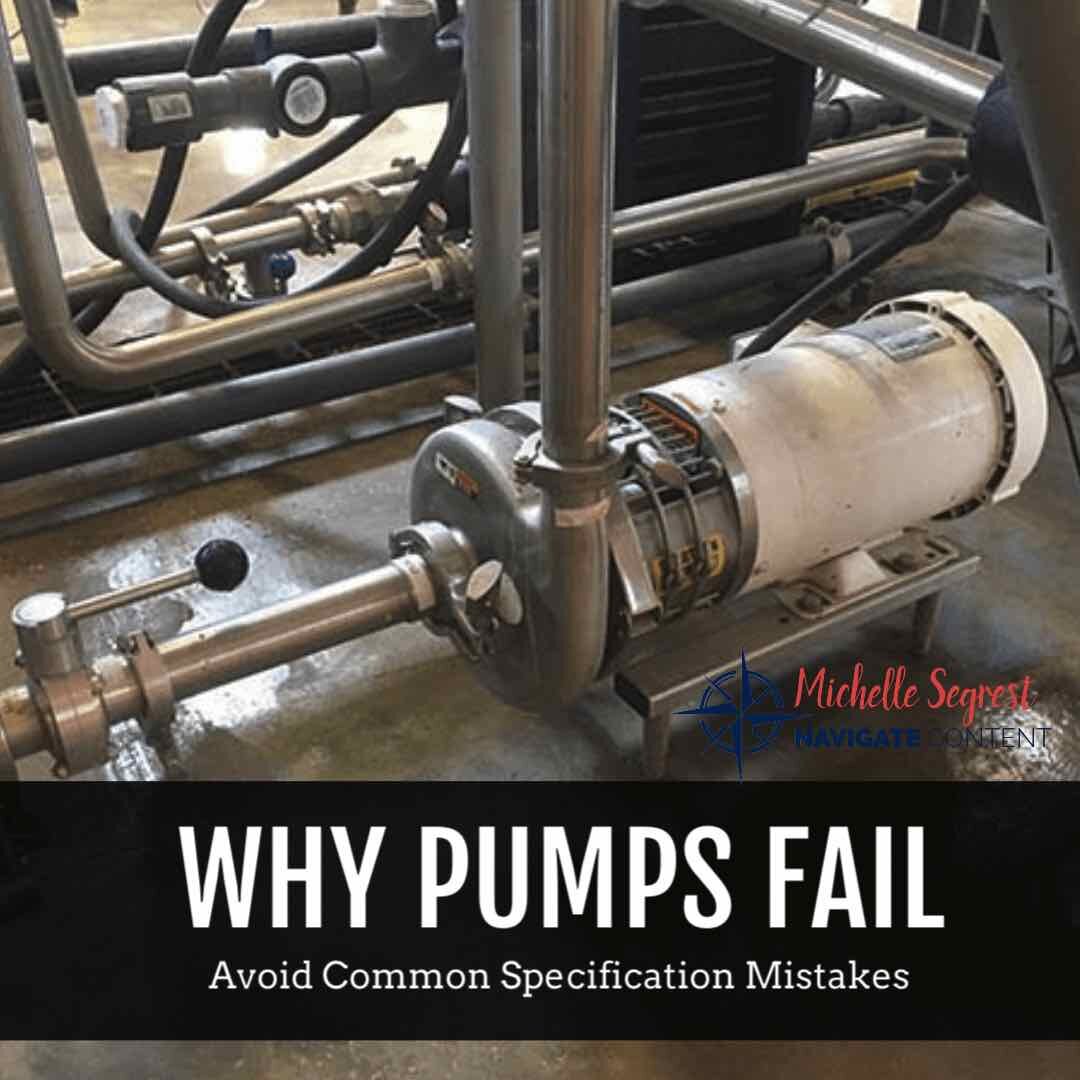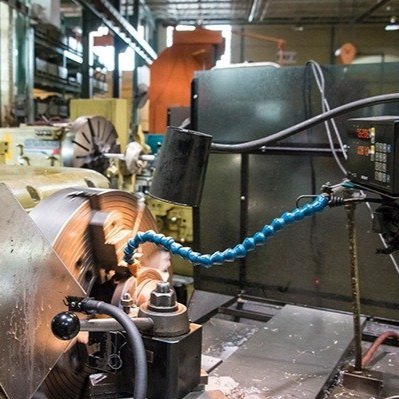Additive Technology Improves Manufacturing Performance
/Companies can produce more reliable and efficient components faster and with fewer resources using 3D-printing technology, also known as additive technology, which is improving manufacturing performance.
By Michelle Segrest, Navigate Content, Inc. - Reporting for Efficient Plant Magazine
Ryan Hooley vividly remembers when General Electric’s (GE) aviation department manufactured a fuel-nozzle component using 3D-printing technology. Traditionally, the component was made of many smaller components. It required welding and assembly—processes that needed time, energy, and materials. But GE found a way to produce a fuel nozzle using additive manufacturing—specifically, 3D printing.
“They were able to make it in one shot, one part,” said Hooley, general manager of product management for GE’s Power Services business in the B/E class fleets. “But additive manufacturing is not just looking at the value propositions like assembly, cost, and cycle. Now we can look at actually improving performance. When people hear 3D printing, I wonder if they realize how it’s being used today. It seems very futuristic. This upgrade is evidence that additive manufacturing is here today. It’s relevant, and it delivers value. Additive manufacturing is fundamentally changing what we can do. It’s not 10 years away. It’s here.”
The upgrade to which Hooley refers is GE’s launch of the MXL2 with AMP (additive-manufacturing performance). It is the world’s first upgrade for GT13E2 gas turbines that uses key components manufactured using additive technology. The new technology creates cooling passages within the component and represents a turning point in the global power-generation industry. It can save gas-plant power producers as much as $2 million in fuel annually, while opening the potential for additional revenue to $3 million annually in new power capacity.
“This upgrade is the first of its kind in this space,” Hooley said. “It’s the first time we are really using additive technology to truly shape the performance of an upgrade. Performance efficiency is derived from operating temperature. The hotter we can run these machines, the more output and more efficiency they provide. In this case, what we’re able to do with additive that we weren’t able to do with traditional manufacturing means, like casting and drilling, is we’re able to cool the parts more efficiently so the machine is able to run hotter. We’re able to expend less energy on cooling flows. Simply said, in a gas turbine we’re converting energy. Part of that energy is wasted on keeping the parts cool. With additive, we’re able to cool these parts more efficiently and reduce cooling flows by as much as 25%. This provides incremental efficiency in machine output.”
Evolution of Additive Manufacturing
By adding materials layer by layer using digital data from a 3D model, companies can now print miniature jet engines, engine parts, turbine engines, ultrasound transducers, pump impellers, and appliances. Even items such as clothing, pottery, shoes, eyewear, orthopedic implants, and some food products can be produced using additive-manufacturing techniques. In 2017, GE Aviation revealed it had used additive manufacturing to create a helicopter engine with 16 parts instead of 900.
GE Aviation has already produced more than 23,000 flight-quality additive parts and is on track to manufacture 100,000 parts by 2020. Today, GE is using more than 300 3D printers, and the company invests $6 billion in its R&D each year.
The Power Services business in which Hooley works maintains a global fleet of gas-turbine engines throughout the world. “My role as project manager is to try to think of ways to keep these assets competitive in a changing marketplace,” Hooley said.
Chicago-based global aftermarket company HydroAire Inc. uses additive manufacturing to create spare parts for its clients. HydroAire refurbishes extremely old pumps and pump parts, such as impellers, for equipment that is sometimes more than 50 years old.
This drives the need for replacement parts and, in some cases, emergency replacement parts, said Werner Bernard, the company’s general manager. “Considering the age of these pumps, the replacement parts from the manufacturer are likely obsolete and may not be easily available,” he said. “Further complicating the situation is the location of the manufacturer. Many cast parts are manufactured outside the U.S and have long lead times.”
HydroAire uses advanced tools, including a coordinate measure machine (CMM), which allows quicker emergency repairs, faster deliveries, and higher-quality pump parts. Standard-equipment repairs typically take six to eight weeks, while emergency repairs must be completed within one day to three weeks, depending on the severity of the situation, according to Bernard.
“This type of repair often drives the need for rapidly supplied cast parts, which traditionally require long lead times because of the use of wooden tooling to create the mold to manufacture the casting,” he explained.
Many materials are used during this process, but Bernard said that the most interesting and appropriate for rapid-casting manufacturing is sand. “With sand, casting tooling (molds and cores) can be created virtually overnight,” he said. “This allows users to eliminate the delay involved in making wooden tooling for castings. Using additive manufacturing, companies can create cast parts faster and with improved geometric tolerances than available with the traditional casting processes.”
Limitations of Additive Manufacturing
There are also limitations with using additive manufacturing in industrial situations.
“One of the key limitations is the size of the part you are trying to print,” Hooley explained. “If you think about a traditional casing—some of them are so big you could walk through them. It will be a while before we can print something the size of a huge wastewater pump. We have material capabilities today that we can apply in advance. I don’t think materials will be a hurdle. I think size is more of a challenge with the technology and the application.”
The other limitation, according to Hooley, is with regard to practices.
“If you pick an industry and take historical design practices and design techniques, they are a function of our manufacturing capabilities,” Hooley said. “We must be able to redefine our design practices to align with these rapidly changing manufacturing capabilities, like 3D printing. We must educate our engineers to be able to use these things as we start from ground zero with the design. That’s another challenge for us as we think through how we apply it—the opportunities are endless, and we are just scratching the surface. But this is a new technology and this comes with an adoption rate. Part of that is governed by how well we can educate our team of engineers who ultimately must use this tool and apply it.”
Business Incorporates Additive Manufacturing
According to GE’s Hooley, “We are just scratching the surface. With this first upgrade, we are now looking at how we take the same techniques and capabilities and wrap those into other upgrades in the short term. Then, more broadly, we are thinking about how we can truly transform our supply chain around something like this. We are working through it piece by piece.
“We will install the MXL2 with AMP upgrade next summer [2019] at Vattenfall AB, an operating power plant in Berlin, Germany. As we march to that milestone, we will be working with our peers throughout the business to find out how we can further optimize the supply chain around this technology. We will learn how to phase out the old and phase in the new.” EP
Companies Put Additive Manufacturing to Use
Additive manufacturing (AM) is rapidly transforming a diverse array of industrial sectors, and each industry and company is on its own journey.
Jung & Co. Gerätebau GmbH, a German company specializing in stainless-steel components, is using AM to keep spare parts more readily available for its customers. Additionally, the firm noted that the assembly of a filler valve in a can-filling plant consists of seven components and requires the addition of the necessary seals. Manufacturing the part by conventional means takes roughly 8 to 10 weeks, including procurement of the required precision cast part. With AM, the whole process takes roughly one week, reducing the component’s overall weight by 35%, according to CEO Thomas Lehmann. “Additive enables short machine downtimes for the beverage fillers that previously seemed impossible,” he said. “A new 3D design and rapid availability saves the customer time and money.”
Optisys LLC, based in West Jordan, UT, makes sophisticated, 3D-printed, metal micro-antenna products for high-performance aerospace and defense applications. The company says the next generation of radio-frequency (RF) antennas can be made using AM and deliver better performance. AM allowed the company to reduce the number of parts in one of its antennas from 100 to just one, while reducing the product’s weight by 95%. The firm also decreased the production lead time to two months from 11 months, and realized a 75% reduction in non-recurring costs. CEO Clinton Cathey stated, “By combining RF design simulation, mechanical engineering, and system optimization focused on AM, we provide metal 3D-printed antenna products at greatly reduced size, weight, lead times, part count and cost—with as good or better RF performance than conventionally manufactured systems. We’re creating structures that were simply not possible to produce in the past.”
LZN Laser Zentrum Nord GmbH, GE’s Concept Laser partnered on a project in which Airbus re-designed a metal cabin bracket for the Airbus A350 XWB airplane. A 3D-printed part made of titanium, replaced a previously milled bracket made of aluminum. This resulted in a 30% weight reduction, enabling Airbus to lower the plane’s fuel consumption or increase its load capacity.
Peter Sander, head of Emerging Technologies & Concepts for Airbus in Hamburg, said, “The omission of tools reduces the costs and shortens the time until the component is available for use by up to 75%. Since tools are not required in the process, it’s now possible at an early stage to produce functional samples of components that are similar to series-produced components. This is done without upfront costs for tools. This means that sources of error can be identified in the early stages of the design process, which allows optimization of processes within the project as a whole. Previously we budgeted around six months to develop a component—now, it’s down to one month.”
Sutrue Ltd, a UK-based medical-device manufacturer, developed an automated suturing device to streamline and create a safer suturing process. The needle rotates softly and with pinpoint precision during suturing, owing to a complex miniature gear mechanism that drives the needle assembled by AM.
Thanks to the suture device, as many as three rotations of a needle/sec. with highest precision are now possible, instead of one stitch/25 sec. produced by hand. The suture device reduces the risk associated with the operation for patients and surgeons.
Alex Berry, Sutrue director and shareholder, said, “AM makes it possible to produce geometries that cannot be achieved using traditional manufacturing methods. In addition, the parts have greater performance capacity or functional precision, or else they are extremely delicate or small.”
Michelle Segrest is president of Navigate Content Inc., and has been a professional journalist for three decades. She specializes in creating content for the processing industries. If you have an interesting efficiency, maintenance, and/or reliability story to tell, please contact her at michelle@navigatecontent.com.
This page contains affiliate links. If you click on the product links and make a purchase, it allows me to make a small commission at no extra cost to you! Thank you for your support and I hope you find value in this content!












